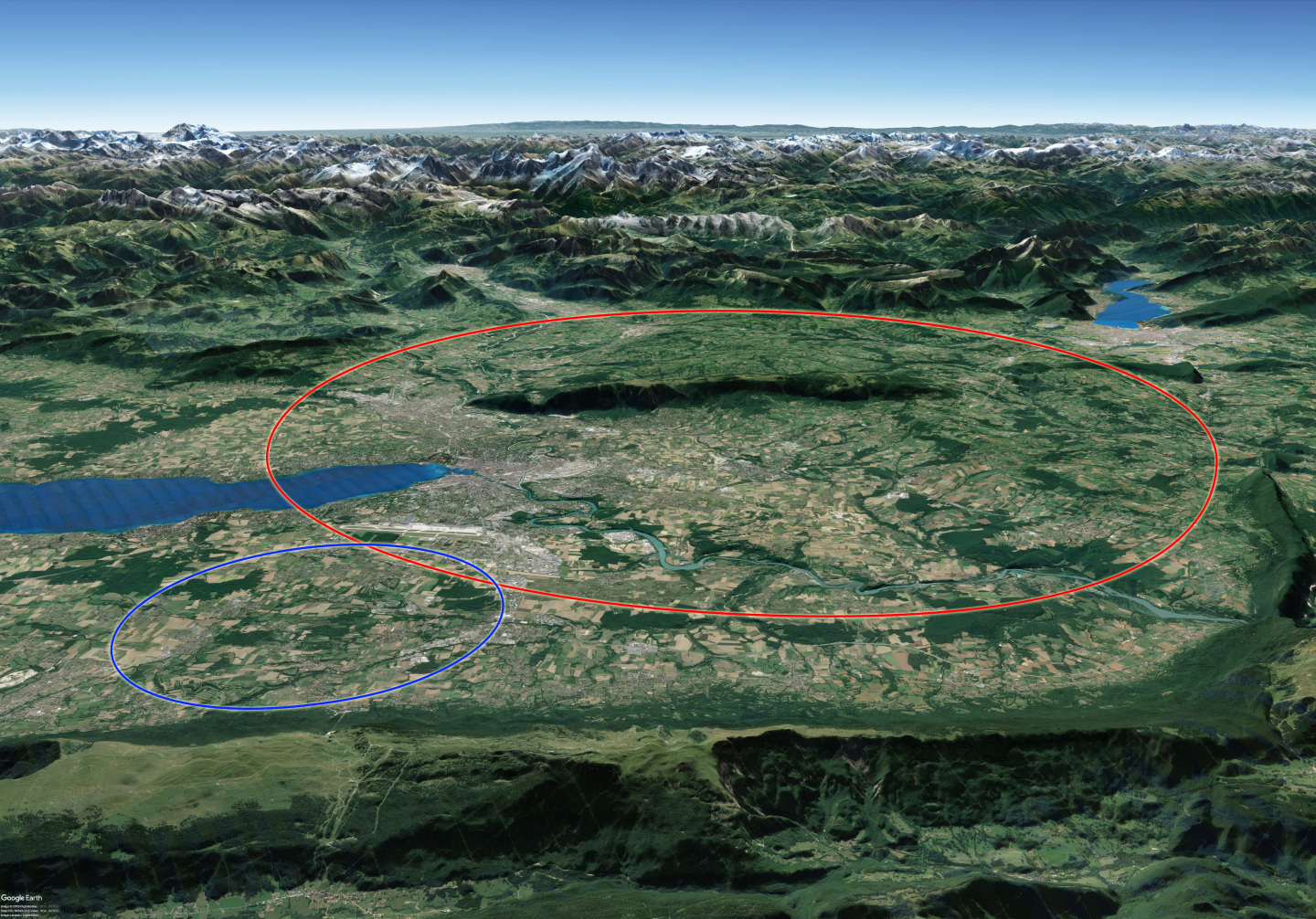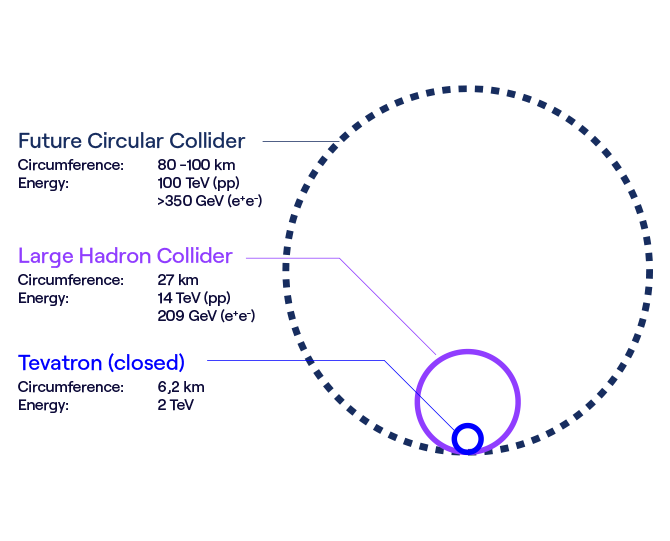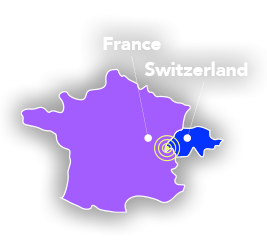8
surface points
200
meter depth (avg)
Up to
4
experiments
7
decades of scientific research
FCC would be the most efficient and comprehensive scientific instrument for addressing the open questions in particle physics.
Successively hosting in the same tunnel a luminosity frontier electron-positron collider (FCC-ee) and an energy frontier proton-proton collider (FCC-hh).
Offering a shared and cost-effective technical and organizational infrastructure, like its predecessors, LEP and LHC.
Strengthen European leadership in physics research throughout the 21st century.




